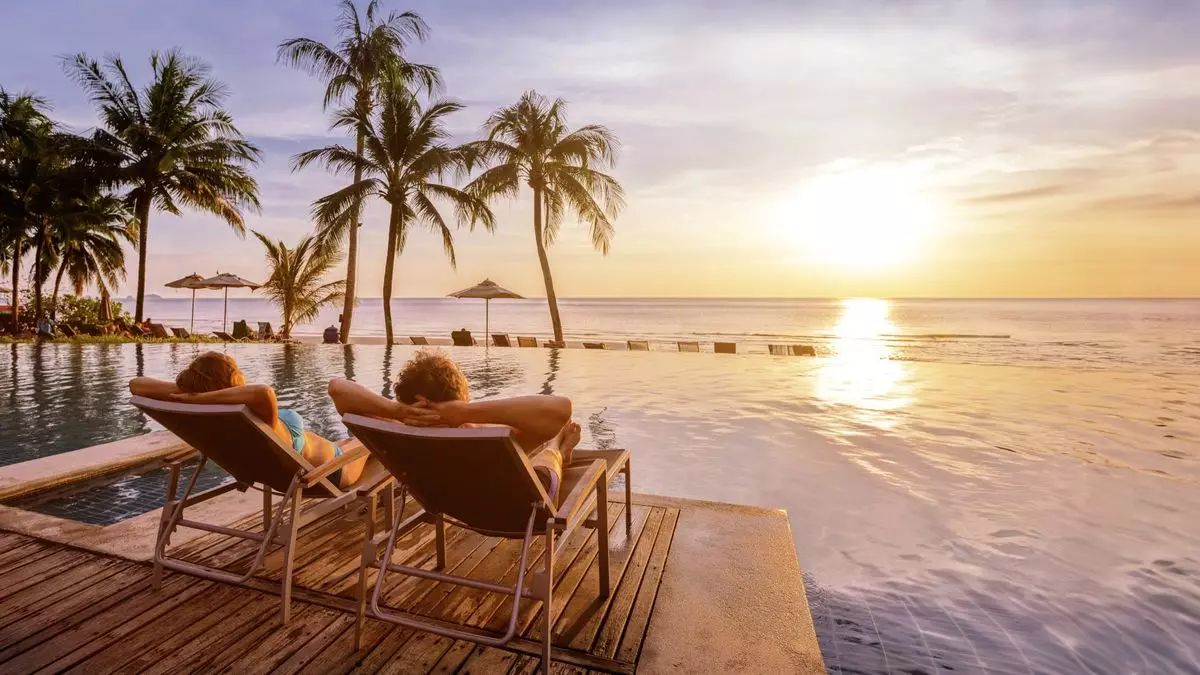The luxury travel market, long considered a symbol of affluence and indulgence, is facing an evolving landscape. While high-end hotels and cruises have enjoyed a booming period, recent discussions amongst industry experts reveal potential shifts on the horizon. The findings shared at the annual SmartFlyer Core conference highlighted both the resilience and vulnerability of luxury travel, suggesting that the dynamics of supply and demand, as well as consumer behavior, are on the verge of significant transformation.
Clayton Reid, the executive chairman of the travel and tourism marketing agency MMGY, expressed concerns regarding the sustainability of current pricing trends for luxury hotels during his keynote speech at the conference held in Lake Louise, Alberta. According to Reid, there are signs that the luxury market, particularly at the upper echelon of hotel offerings, may soon experience downward pressure on room rates. His warning is particularly pertinent for properties that cater to the upper-middle class, a demographic that Reid believes is beginning to feel financial strain.
Despite a modest increase in luxury hotel rates—1% from 2023 to 2024—the average room price of $388 per night indicates that rates are still inflated by 31% compared to pre-pandemic figures. This surge has led to a notable spike in luxury hotels priced over $1,000 per night, with surveys indicating that the number of such hotels in the U.S. has quadrupled since 2019.
Interestingly, while classic luxury hotels may be squeezing margins, ultra-exclusive experiences seem to be thriving. Reid’s example of the Sheldon Chalet in Denali National Park underscores this divide; the Chalet offers unique experiences accessible only by helicopter, priced at an astonishing $96,000 for a minimum three-night stay. Such unparalleled luxury is tailored for affluent clients who remain largely unaffected by economic downturns.
This brand of exclusivity fosters an encouraging trajectory for certain segments of the luxury market, especially those targeted at the ultra-wealthy who seem less inclined to reduce spending on such unique adventures. Reid’s analysis posits that while the broader luxury market might experience necessary price corrections, the rarefied experiences will likely continue to attract high-net-worth individuals.
Shifting Consumer Sentiment and Financial Indicators
The shifting views towards luxury spending are increasingly influenced by broader economic factors. Consumer confidence appears to be waning, as illustrated by rising credit card delinquency rates—more than doubling in just three years—and unprecedented levels of outstanding credit card debt in the U.S. These indicators suggest that the discretionary income available to the average traveler is diminishing, causing a ripple effect across the luxury travel sector.
Despite these troubling indicators in consumer finances, travel advisor insights reveal a contrasting optimism for the upcoming year. Advisors from the SmartFlyer network suggest that demand for luxury travel remains robust, with expectations lining up for continued growth in 2025. This perspective is echoed by SmartFlyer COO Erina Pindar, who described 2025 business prospects as “still looking really healthy.”
Industry forecasts carry mixed signals. Analysts predict that revenue per available room (RevPAR) in luxury hotels will rise marginally over the next few years, underscoring a relatively stable outlook for high-end properties. However, this stability should be viewed with caution. Historical precedents show that consumer sentiment and spending behaviors can shift rapidly, especially in the face of economic uncertainty.
SmartFlyer founder Michael Holtz observed that the market’s current state might reset consumer expectations. He notes the evolution of pricing norms, particularly in major urban markets like New York, where staying in a quality hotel for under $1,000 per night has become virtually impossible. This exorbitant trend may eventually deter clients, prompting a reevaluation of travel priorities.
In the face of these changes, travel advisors play a crucial role in guiding clients through the evolving luxury landscape. By offering insights into hotel values, exclusivity, and tailored experiences, advisors can help clients navigate their options in a way that maximizes both value and enjoyment. It may require a strategic pivot, focusing on the aspects of luxury that resonate most with the ups and downs of economic realities.
As the sector reconceptualizes itself post-pandemic, there is a potent narrative emerging; the notion that travel is not just for leisure but is also a vital part of personal growth and understanding. This sentiment suggests that while budgets may tighten, the intrinsic value of experiences may propel luxury travel forward, albeit in new, perhaps more innovative ways.
The luxury travel market is at a crossroads, confronting challenges that will likely reshape its future. Both opportunities for premium experiences and threats from economic factors will dictate the next chapters in luxury travel, emphasizing the need for adaptability and a keen understanding of consumer sentiment.

